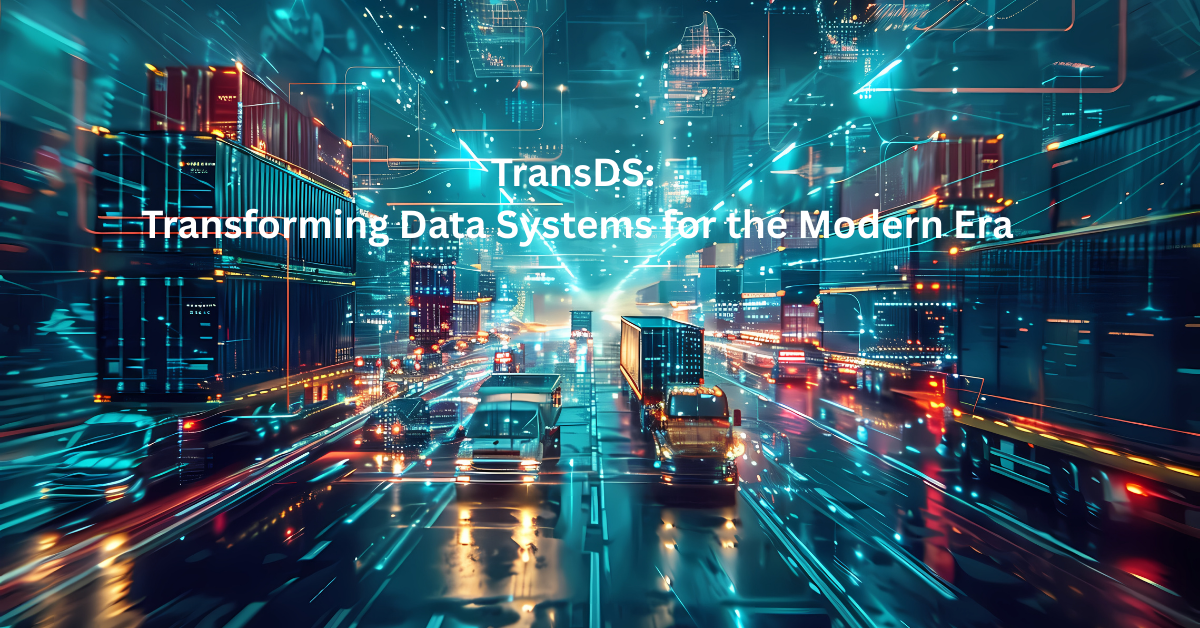TransDS: Transforming Data Systems for the Modern Era
Introduction:
In today’s fast-paced digital world, data has become the lifeblood of modern organizations. To remain competitive, businesses, governments, and research institutions must rely on advanced systems that can turn raw data into meaningful insights. This is where TransDS (Transformative Data Systems) comes in—a revolutionary framework that redefines how data is collected, processed, stored, and utilized for decision-making. With its AI-driven architecture, real-time analytics, and cloud-first approach, Transds empowers organizations to move beyond outdated methods. It provides the agility needed to adapt quickly to market shifts and unlocks hidden value from data that would otherwise go unnoticed.
What Is TransDS?
Many ask, what is it? The answer is simple: it stands for Transformative Data Systems, an integrated architecture designed to optimize how organizations handle data. It goes beyond traditional data systems by integrating AI, machine learning, cloud computing, predictive modeling, and scalable storage solutions. The primary purpose of it is to transform raw information into actionable intelligence that fuels smarter operations and innovation. By bridging the gap between data generation and decision-making, it helps organizations respond faster to challenges and opportunities. Unlike conventional systems, Transds grows with your business needs, offering flexibility, accuracy, and efficiency that legacy solutions cannot match.
Core Components of TransDS
The core components of it create a powerful foundation for digital transformation:
Data Acquisition Layer – Collects information from IoT devices, applications, and public or private databases. This ensures businesses capture diverse data streams in real time, from consumer interactions to sensor-based monitoring in smart cities.
Data Integration with Transds – Merges datasets from multiple formats into one unified framework, reducing silos and enabling collaboration across departments.
Processing & Real-Time Analytics in Transds – Uses AI and ML to deliver real-time predictions, forecasts, and insights that enhance decision-making.
Scalable Storage Solutions with Transds – Cloud-based and hybrid models ensure secure, flexible, and cost-effective data storage as organizations grow.
User Interface & Reporting – Customizable dashboards and APIs allow stakeholders to access, visualize, and share insights effortlessly.
Why TransDS Matters Today
In the digital economy, timely and accurate insights are crucial. It ensures organizations:
Eliminate data silos and integration bottlenecks.
Deliver insights in real time with predictive modeling in it.
Maintain data security in this with encryption and compliance.
Enable innovation in industries like healthcare, finance, logistics, retail, and smart cities.
Without systems like it, businesses risk falling behind competitors who adopt advanced digital transformation strategies. Why use it? Because it gives leaders the power to make informed, data-driven choices. By combining AI in it with automation and scalable cloud infrastructure, organizations can build a competitive edge that accelerates long-term success.
Key Features of TransDS
The most important features of TransDS include:
Real-Time Analytics for instant responses.
Predictive Modeling for forecasting future trends.
Customizable Dashboards tailored to business intelligence.
High-Level Data Security with encryption and compliance tools.
Scalable Storage Solutions with it to handle massive data growth.
Each feature is designed to address the unique challenges of modern businesses. Real-time analytics allow companies to adapt instantly to customer behavior and market fluctuations. Predictive modeling provides an edge by spotting risks early and uncovering opportunities. Meanwhile, customizable dashboards empower executives and employees to make confident decisions without advanced technical training.
Applications of TransDS
It offers wide-ranging applications across industries:
TransDS in Business Intelligence – Unlocks customer insights, sales trends, and marketing strategies.
TransDS in Healthcare – Enhances patient diagnosis, treatment tracking, and hospital resource planning.
TransDS for Supply Chain Optimization – Streamlines tracking, demand forecasting, and logistics efficiency.
TransDS for Smart Cities – Powers IoT-based urban planning, traffic monitoring, and energy management.
TransDS for Research & Development – Accelerates data-driven scientific and engineering innovations.
Each use case demonstrates how it vs traditional data systems creates measurable advantages. While legacy systems are slow and fragmented, it offers speed, security, and scalability that modern industries demand.
Benefits of Implementing TransDS
Organizations adopting TransDS gain numerous advantages:
Efficiency – Automated workflows reduce manual errors.
Accuracy – Integrated systems deliver clean, reliable data.
Speed – Real-time analytics allow immediate insights.
Cost-Effectiveness – Optimized resource allocation reduces expenses.
Competitive Edge – Data-driven strategies create sustainable growth.
The benefits of it extend far beyond operations. By reducing waste and increasing decision-making power, organizations strengthen their market position. It provides executives with confidence to take calculated risks and identify profitable opportunities. Most importantly, scalability ensures that businesses can continue benefiting from it as their data needs expand.
Challenges in Adopting TransDS
Despite its strengths, there are several challenges of adopting it:
High Initial Costs for infrastructure, licensing, and training.
Complex Integration with legacy systems.
Data Privacy Concerns in industries like healthcare and finance.
Change Management for staff adjusting to new workflows.
Organizations can overcome these issues with proper planning and phased adoption. Many start small with pilot projects before scaling, making the TransDS implementation guide crucial for success. While initial expenses are high, long-term savings, improved accuracy, and efficiency make the investment worthwhile.
The Role of AI in TransDS
The presence of AI in it is what makes it transformative:
Pattern Recognition identifies anomalies and market opportunities.
Automation reduces human workload in repetitive tasks.
Continuous Optimization ensures predictive models grow smarter over time.
This integration of AI ensures that it keeps learning and adapting to new challenges. It delivers the intelligence businesses need to outperform competitors, while also making decision-making more precise and reliable.
Future of TransDS Technology
The future of technology is filled with innovation:
Edge Computing for faster data processing near the source.
Blockchain Integration for transparent, secure data management.
Natural Language Interfaces to make data access simple and conversational.
IoT Expansion to connect billions of devices seamlessly.
As industries become more digital, it will continue evolving into an essential backbone for global enterprises. Its combination of scalability, security, and intelligence positions it as the future of data integration with it across every sector.
How to Implement TransDS Successfully
Following a TransDS implementation guide ensures success:
Assess Needs – Define the specific data challenges.
Start Small – Pilot in one department before scaling.
Ensure Data Quality – Garbage in, garbage out.
Train Teams – Equip staff with knowledge of it vs traditional data systems.
Monitor & Optimize – Continuous improvements for long-term ROI.
Proper execution guarantees smooth transitions from old systems to TransDS, helping businesses maximize efficiency while maintaining compliance.
Conclusion
It is more than just a system—it’s a paradigm shift in data management. By blending AI in it, cloud computing, predictive modeling, and real-time analytics in it, it transforms raw data into actionable intelligence. Organizations that adopt it not only streamline operations but also gain a competitive edge in today’s digital-first economy. Its scalability, advanced security, and integration flexibility make it the ideal replacement for outdated systems. In short, the future belongs to businesses that embrace TransDS technology for smarter, faster, and more secure digital transformation.
FAQs
Q. What industries can benefit the most from it?
Industries like healthcare, finance, logistics, retail, government, and even renewable energy can benefit from it. TransDS in healthcare and TransDS in business intelligence are among the most common use cases.
Q. Is it suitable for small businesses?
Yes, it is scalable, making it useful for both small and large enterprises. Small businesses can adopt modular solutions and expand as data grows.
Q. How does it ensure data security?
Data security includes encryption, blockchain integration, and compliance tools. These safeguards protect sensitive data and maintain customer trust.
Q. Can it replace legacy systems entirely?
Yes, but many companies prefer hybrid adoption. Comparing it vs traditional data systems, the shift provides speed, scalability, and efficiency that older platforms cannot match.
Q. What’s the future of TransDS technology?
The future of TransDS includes edge computing, blockchain, natural language interfaces, and IoT expansion. These innovations will make it more adaptive and powerful.







